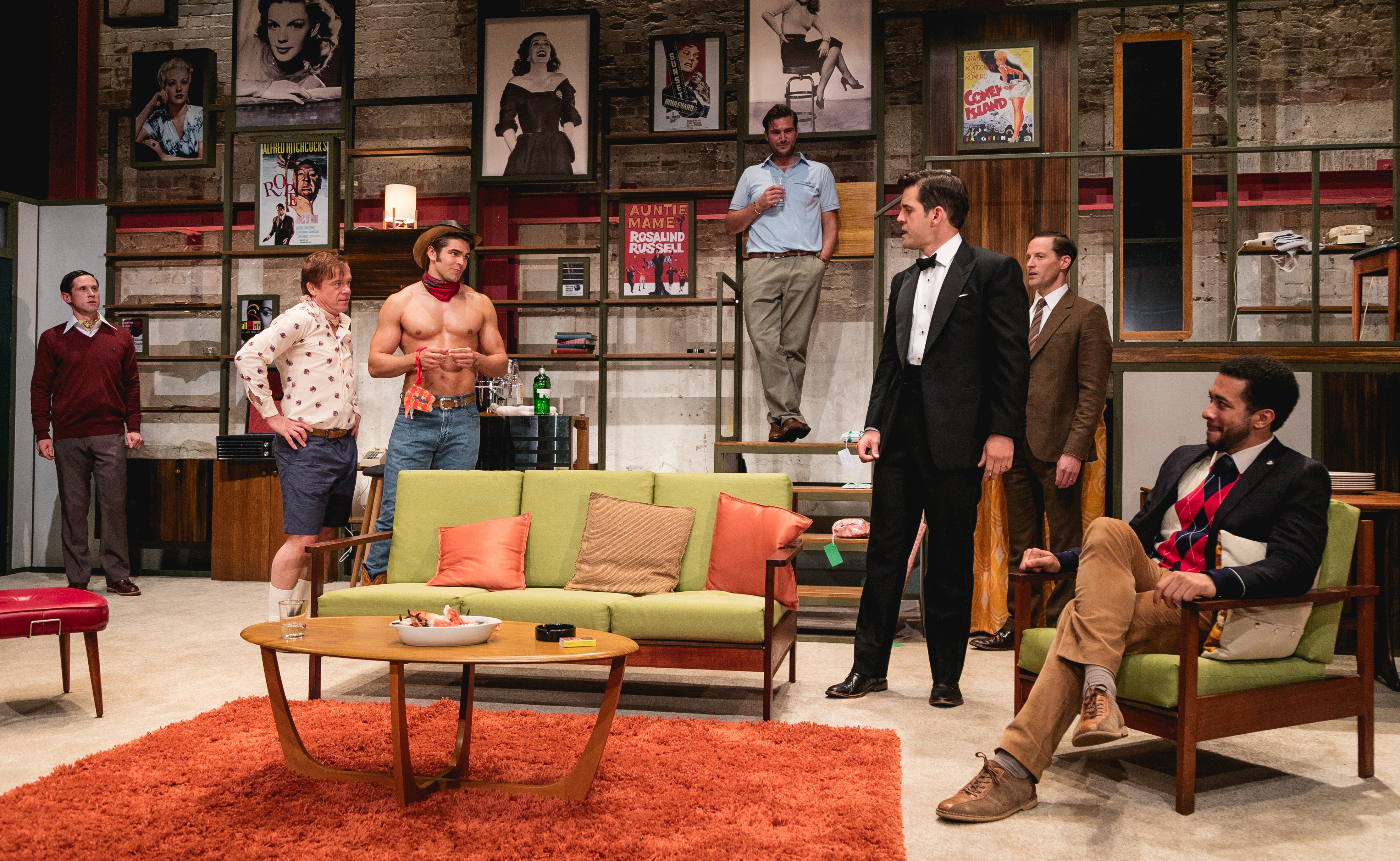Written by Kristian Harris and Sarah Kingsmill
Image Credit: Darren Bell
Boys in the Band is a play originally written by Mart Crowley, and was first shown in 1968, where it became a controversial insight into homosexual life, shocking mainstream audiences. This year, it was revived, going on a tour of the UK, performing at venues in London, Salford, Brighton and Leeds. The choice of venue for Brighton is a great one and the Theatre Royal, Brighton’s impressive theatre on New Road, a fitting location to host a party on stage.
The play tells the story of Michael, a middle-aged homosexual male, hosting a birthday party for his friend Harold in his New York apartment. Party members include what Michael describes as “seven screaming queens”, including Bernard, Hank, Larry, Emory, Donald, Harold and Michael himself. In the beginnings of his party, Michael gets a call from Alan, an old school friend who is straight, married and conservative, who is having a crisis and subsequently invites himself to Michael’s party. The ninth guest is a present to Harold from Emery, a young man dressed as a cowboy, who is there to provide light entertainment throughout the play through his dim-wittedness. During the performance, the group’s light-heartedness and witty cracks at one another start to take a twisted turn, and the second act becomes far more dark and sinister.
The initial attraction to the play is of course Olivier award winner Mark Gatiss, who is most famed for his role as Mycroft Holmes in Sherlock. Gatiss plays Harold, a sarcastic and self-proclaimed ‘fairy’, whose relationship with Michael appears to be a ‘friend-enemy’ type, which is ironic as Michael is played by Ian Hallard, Gatiss’ real-life husband. Whilst Gatiss’ performance is mainly in the second act, Hallard’s Michael is the protagonist of this play, and we see most of the story from his eyes. Both actors gave a strong performance, notably Hallard, who had the audience loving him to loathe him, but had their solid attention throughout. Another notable performance was James Holmes as ‘Emory’, a stereotypical flamboyant character who had some witty lines to play with, and sticks out by far as the most entertaining. He also conveys a much more profound and troubled side to him later on in the play, which gave his character more depth.
The set design was mapped as a studio apartment, with pictures all over the wall of typically ‘gay icons’, such as Judy Garland, Bette Davis and Marilyn Monroe. The sound and lighting had no issues; the actors did not use microphones, which was fine for people sitting in the stalls, although I could not comment on those in the Royal Circle. However, their projection was impressive so they may well have been heard throughout the theatre.
Overall, Boys in the Band is a play that will make you experience all emotions; it is entertaining and also heart breaking in places. With its slightly dated script, some might say that the characters embodied stereotypical and out-dated homosexual behaviour; however, the depth of the characters in the second act and the time frame in which it is set excuse all of this. The acting is impressive, and the story will grip you – making it a worthwhile viewing experience for anyone of any age.

